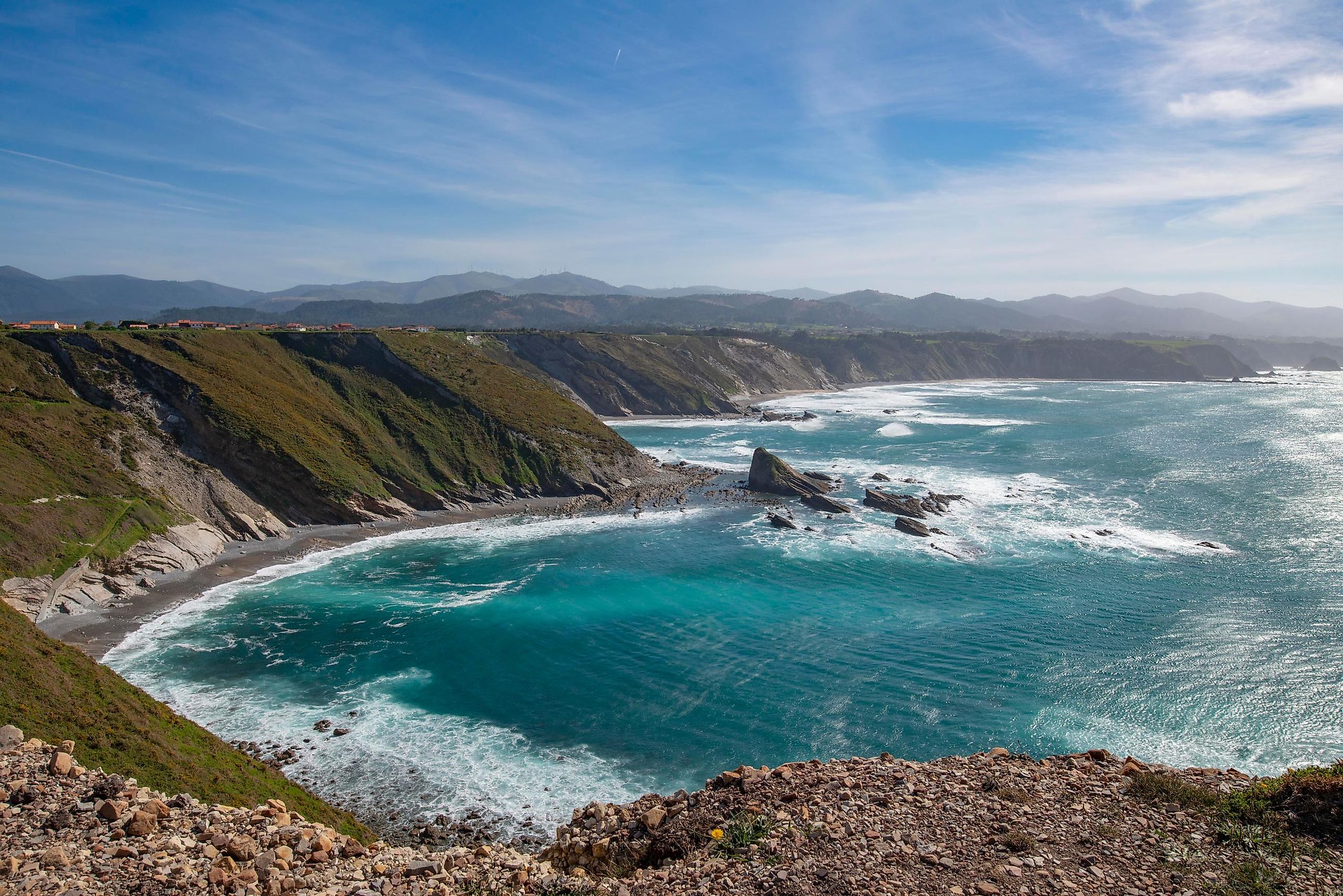
Bay Of Biscay
Covering an area of 223,000 km2, the Bay of Biscay is a wide extension of the North Atlantic Ocean that is located on the western coast of Europe. The Bay of Biscay is bounded in the east by France and in the south by Spain. The Celtic Sea lies to the north of the Bay of Biscay. The southern part of the Bay of Biscay is often referred to as the Cantabrian Sea (or, Mar Cantábrico).
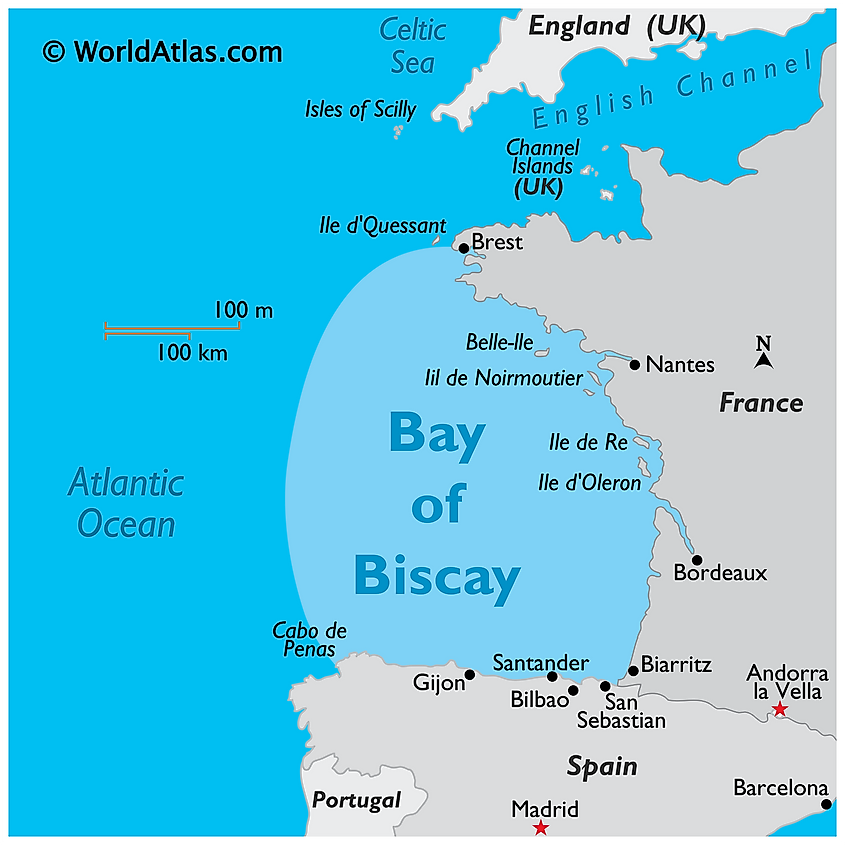
Origin Of Name
The Bay of Biscay has been named in reference to the western Basque districts (Biscay), which are located on the northern coast of Spain. In the 1st century BCE, the Romans called the Bay of Biscay Sinus Cantabrorum and Mare Gallaecum. Some other names for the Bay of Biscay in different languages include Golfe de Gascogne (French), Golfo de Vizcaya (Spanish), Golf de Gasconha (Occitan), Golfu de Biscaya (Asturian), and as Golfo de Biscaia (Galician).
Geography Facts
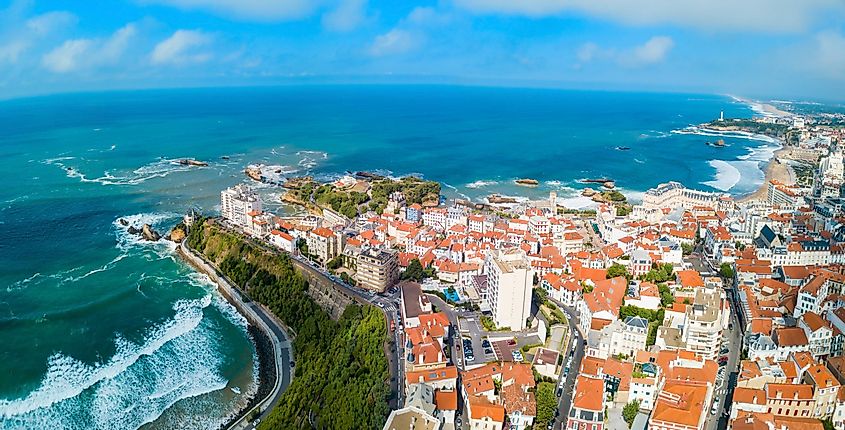
The Bay of Biscay has a maximum depth of 4,735 m and an estimated average depth of 1,744 m. Major parts of the Bay of Biscay are relatively shallow due to the continental shelf that extends far into the bay’s waters. The major rivers that drain into the Bay of Biscay include Adour, Bidasoa, Charente, Dordogne, Garonne, Loire, etc.
The Bay of Biscay is widely known among sailors for its violent storms and rough seas. The Bay faces some of the harshest weather conditions in the Atlantic, mostly during the winter season. Gales exceeding 113 km/hour are usually common from October to March. The southwestern part of the bay is covered by large intense fog triangles during the early summer and the late spring season.
Marine Life
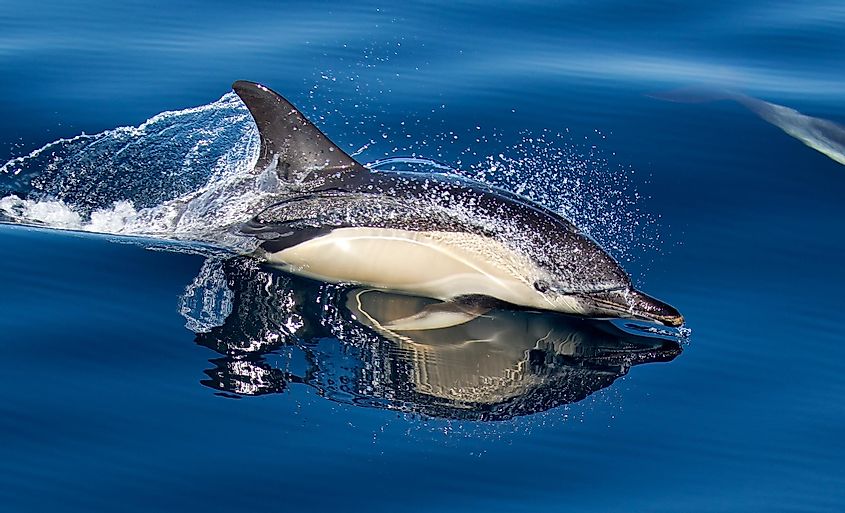
The different fish that are found in the Bay of Biscay include herring, chub mackerel, anchovy, European eel, sardine, sprat, and horse mackerel. Scaleless dragonfish is commonly found in the Bay of Biscay. Numerous species of seabirds including gannets and different marine mammals like short-beaked common dolphins, striped dolphins, harbor porpoises, sperm whales, beaked whales, etc. are also found here.
Brief History
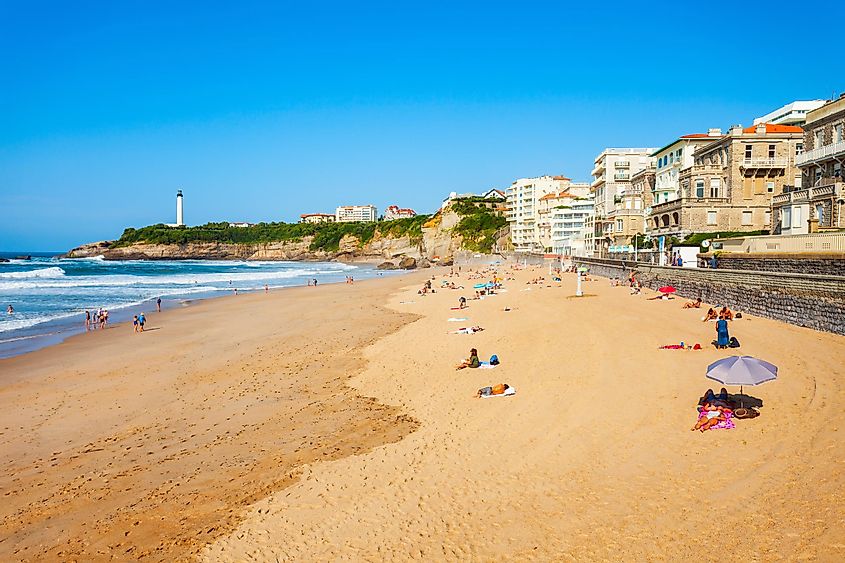
The Bay of Biscay has been a common location for different naval battles like the 1592 Battle of Biscay, the June 1795 Biscay campaign, and the Battle of the Bay of Biscay in 1943. The 1592 battle was fought between Spain and England, while the 1795 Battle was fought between the British and the French. The 1943 battle was a part of "Operation Stonewall" in the Second World War and was fought by HMS Glasgow and HMS Enterprise against a fleet of German warships. The German submarine U-667 was ultimately destroyed and sunk in the waters of the Bay of Biscay. The German soldiers referred to the Bay as the “Valley of Death” since more than 70 German submarines were sunk in its waters by the Royal Air Force. Many other ships have also been sunk in the waters of the bay. These include the USS Californian (1918), SS Afrique (1920), and the Soviet sub-K-8 (1970).
The major ports along the Bay of Biscay include the ports of Avilés, Bilbao, Gijón and Santander in Spain, and the ports of Bayonne, Brest, La Rochelle, Bordeaux, and Nantes of France. Different French resorts like Biarritz, La Baule and Saint-Jean-de-Luz are also found along the Bay of Biscay.











